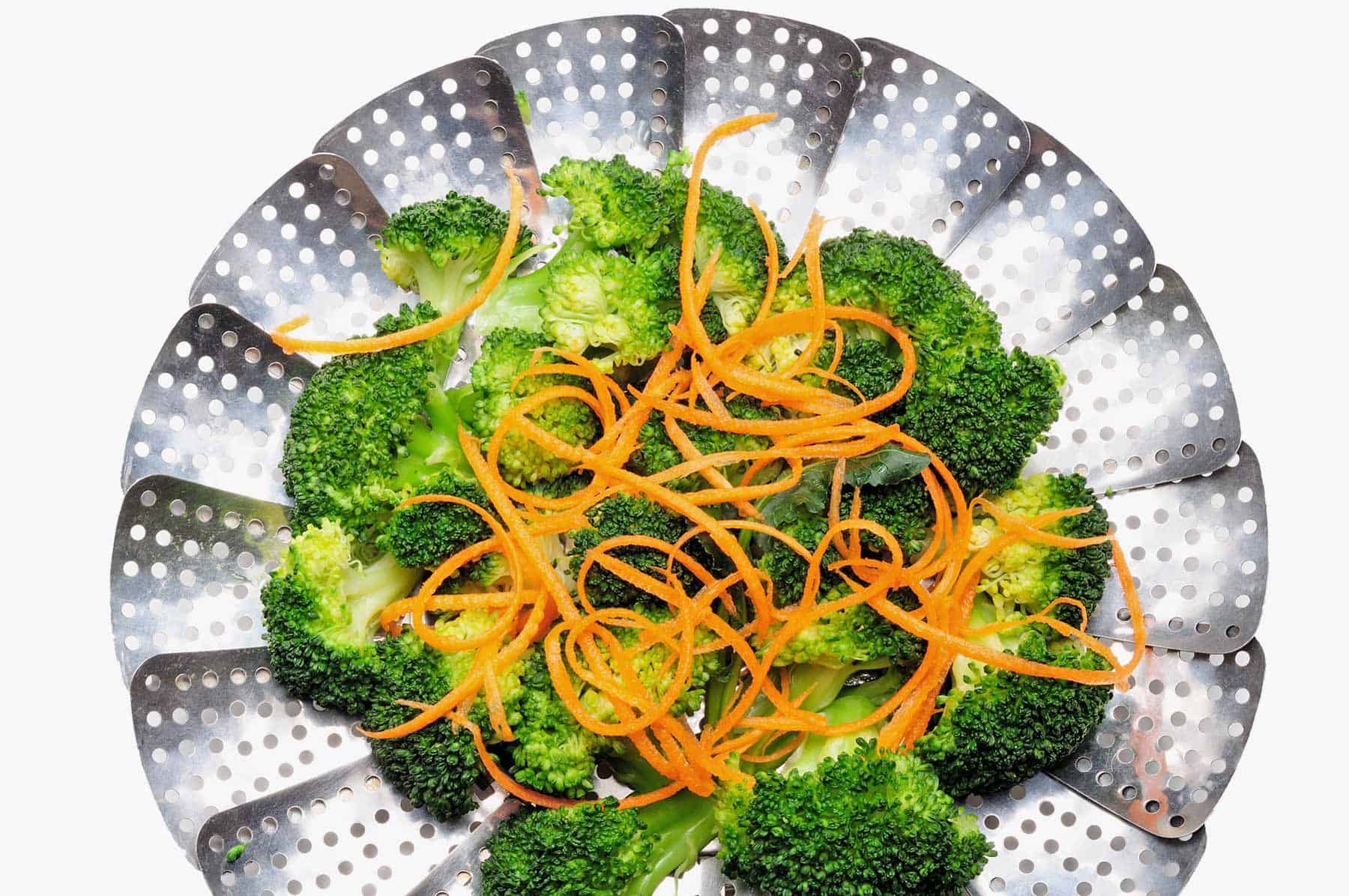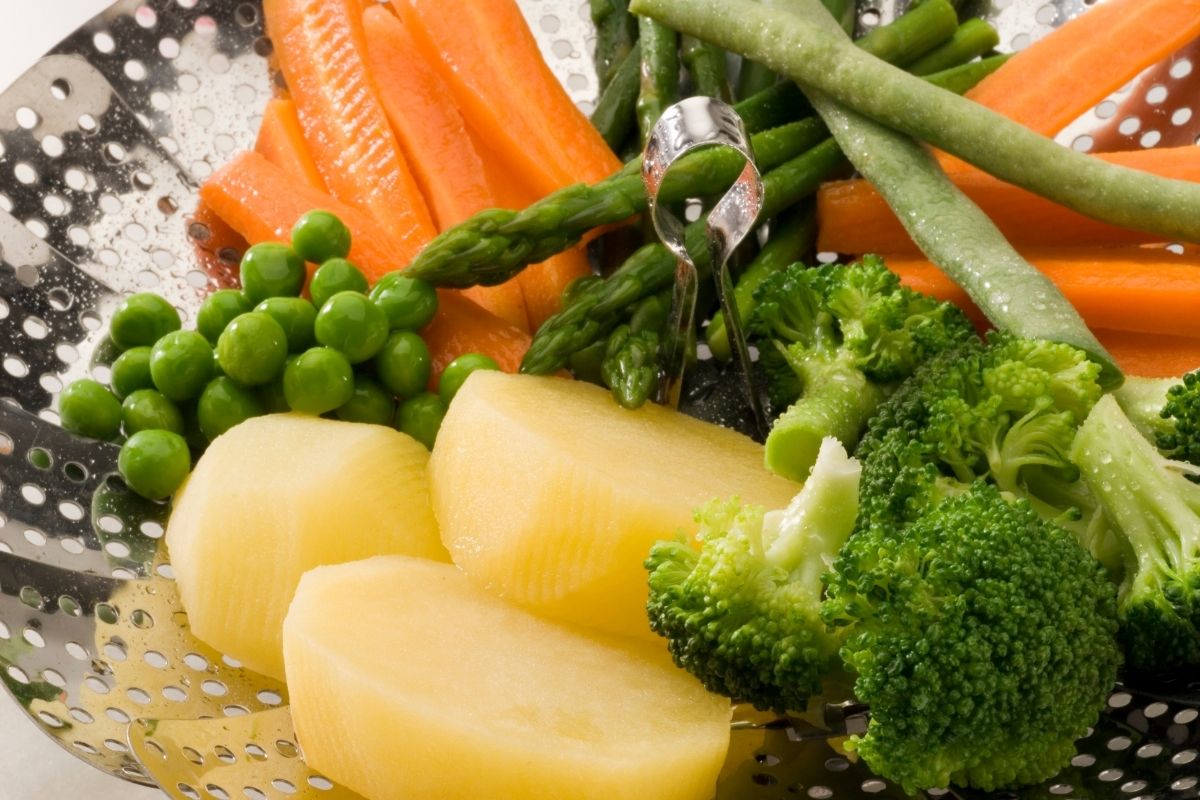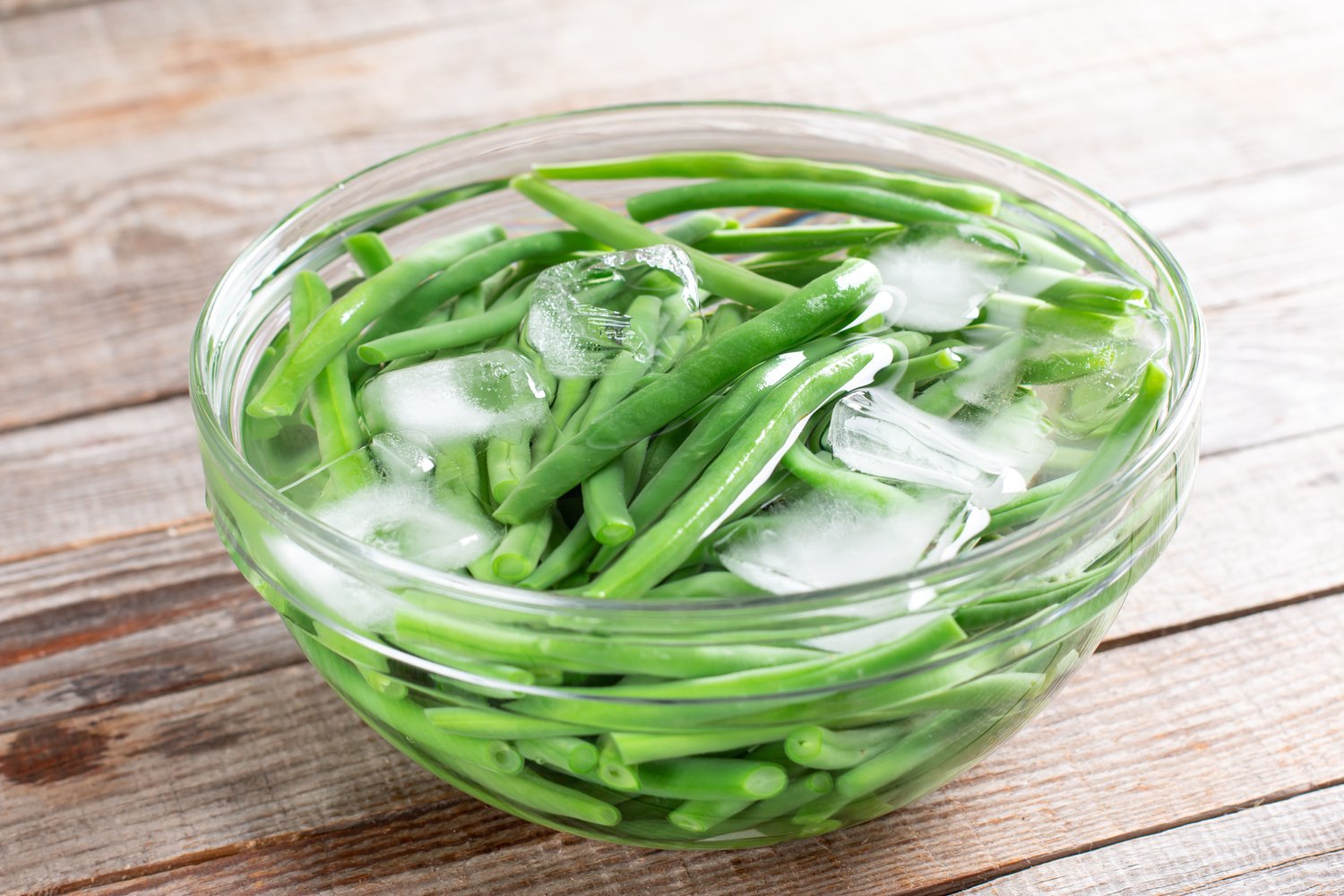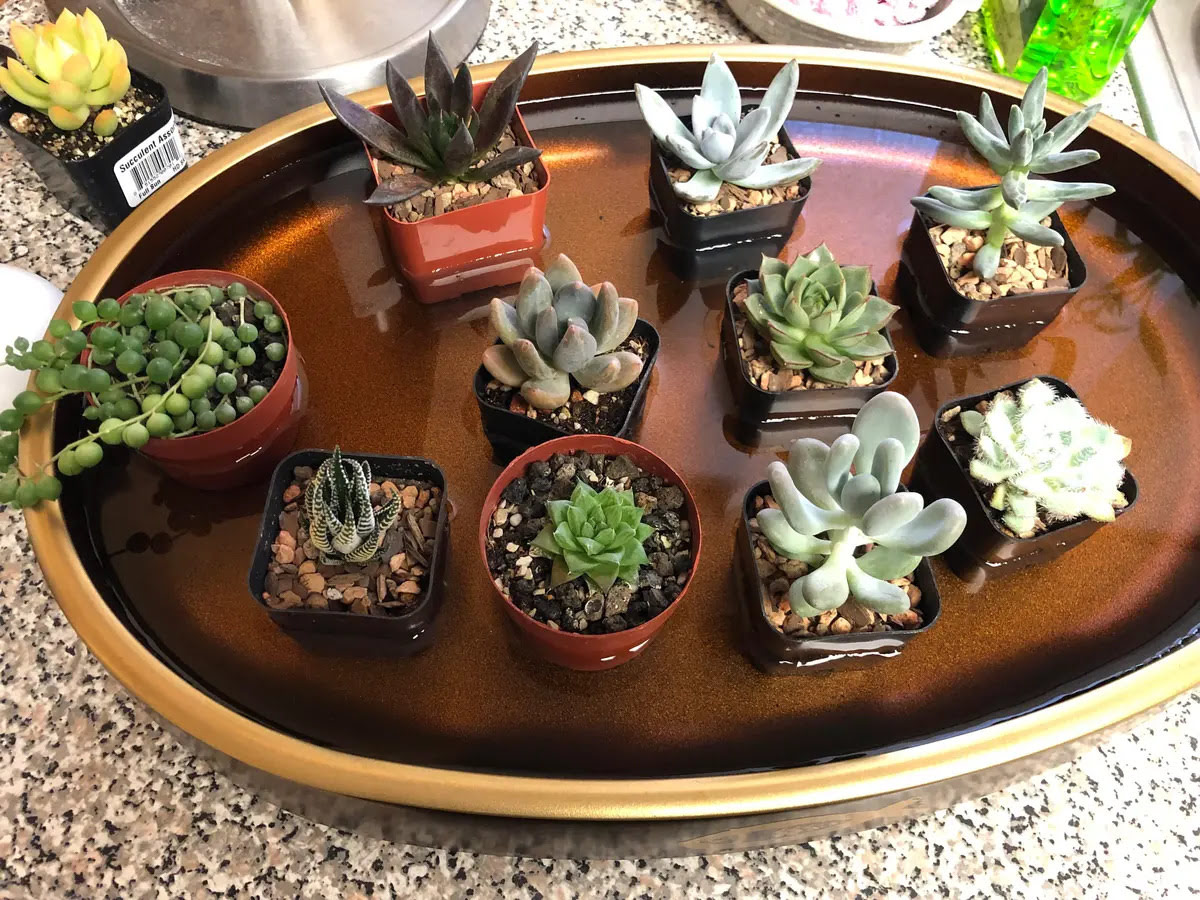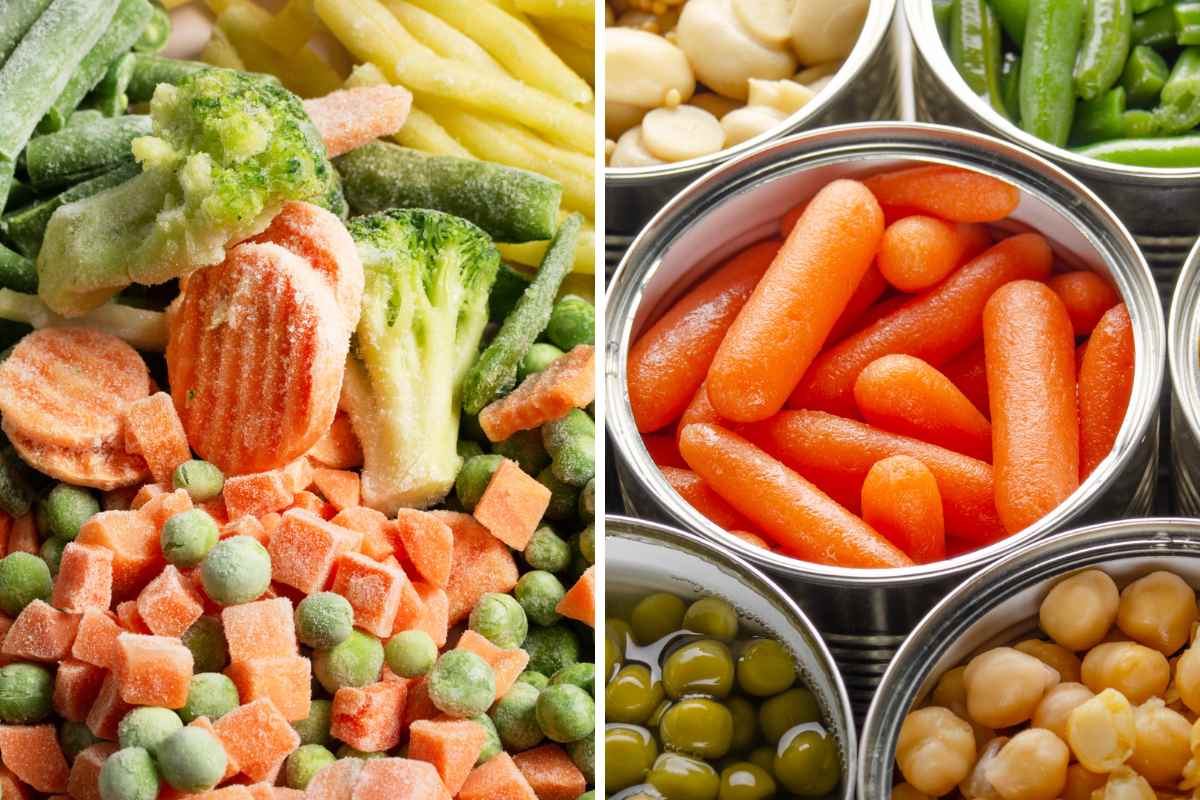Home>Gardening News and Trends>Latest News>How Long Do You Steam Frozen Vegetables


Latest News
How Long Do You Steam Frozen Vegetables
Modified: January 22, 2024
Learn how to steam frozen vegetables and enjoy their nutritional benefits. Find the latest news and tips on steaming frozen vegetables for a healthy and convenient meal.
(Many of the links in this article redirect to a specific reviewed product. Your purchase of these products through affiliate links helps to generate commission for Chicagolandgardening.com, at no extra cost. Learn more)
Table of Contents
Introduction
Steaming frozen vegetables is a convenient and healthy way to prepare your favorite veggies. Whether you’re looking to add some color to your plate or simply want to enjoy a nutritious side dish, steaming frozen vegetables can provide a quick and easy solution.
When vegetables are frozen, they retain their nutrients and freshness, making them a great option for those times when fresh produce is not readily available. Steaming frozen vegetables helps to preserve their vibrant colors, flavors, and valuable nutrients, ensuring that you can enjoy the best of both worlds: convenience and health.
But how long should you steam frozen vegetables to achieve the ideal texture and taste? The answer may vary depending on the type of vegetable you are steaming and your personal preference. In this article, we will explore the factors that affect steaming time, provide steaming instructions for various types of vegetables, and share some tips to help you make the most out of your steamed frozen vegetables.
Whether you’re an avid home cook or a beginner in the kitchen, understanding the art of steaming frozen vegetables can elevate your cooking skills and enhance your culinary experience. So, let’s dive in and discover the secrets to perfectly steamed frozen vegetables!
Importance of Steaming Frozen Vegetables
Steaming frozen vegetables offers several benefits that make it an excellent cooking method for incorporating more vegetables into your diet. Here are some reasons why steaming frozen vegetables is important:
1. Retains Nutritional Value: Steaming is a gentle cooking process that helps preserve the nutritional content of vegetables. When vegetables are steamed, they maintain their vitamins, minerals, and antioxidants that are essential for a healthy body.
2. Enhanced Flavor and Texture: Steaming frozen vegetables helps to maintain their natural flavors and textures. Unlike boiling, which can cause vegetables to become mushy, steaming allows them to retain their crispness and vibrant colors, providing a delightful eating experience.
3. Saves Time and Effort: Frozen vegetables are pre-cut and ready to use, saving you time and effort in the kitchen. With just a few minutes of steaming, you can have a nutritious and delicious side dish or incorporate them into your favorite recipes.
4. Versatility: Steamed frozen vegetables can be added to a variety of dishes, such as stir-fries, salads, soups, and pasta dishes. They provide a quick and easy way to boost the nutritional value of your meals, without compromising on taste or convenience.
5. Digestive Health: Steaming frozen vegetables allows them to retain their natural fiber content, which aids in digestion and promotes a healthy gut. Fiber helps regulate bowel movements, supports healthy weight management, and contributes to a reduced risk of certain diseases.
6. Budget-Friendly: Frozen vegetables are often more affordable than fresh ones, making them an economical choice for those on a budget. By steaming frozen vegetables, you can enjoy a nutritious meal without breaking the bank.
7. Environmental Sustainability: Using frozen vegetables reduces food waste, as they have a longer shelf life compared to fresh produce. By steaming frozen vegetables, you are actively contributing to a more sustainable food system by minimizing food spoilage and reducing your carbon footprint.
Steaming frozen vegetables is an excellent way to enjoy a variety of nutritious and delicious vegetables year-round. Incorporating steamed frozen vegetables into your meals can elevate their nutritional value, add vibrant colors to your plate, and enhance the overall dining experience.
Factors Affecting Steaming Time
When it comes to steaming frozen vegetables, the cooking time can vary depending on several factors. Understanding these factors can help you achieve the perfect texture and doneness for your vegetables. Here are some key factors that can affect steaming time:
1. Vegetable Type: Different vegetables have different densities and moisture levels, which can impact their steaming time. For example, leafy greens like spinach or kale may require less steaming time compared to denser vegetables like carrots or broccoli. It’s important to consider the specific vegetable you’re steaming and adjust the cooking time accordingly.
2. Size of Vegetable Pieces: The size of the vegetable pieces also plays a role in steaming time. Smaller or thinly sliced pieces will cook faster than larger or thicker chunks. If you prefer your vegetables to have more crunch, you can opt for larger pieces and increase the steaming time accordingly.
3. Frozen or Thawed: Whether you are steaming frozen vegetables straight from the freezer or allowing them to thaw beforehand can affect cooking time. Thawed vegetables will generally require less steaming time compared to frozen ones. If you’re steaming frozen vegetables, it’s recommended to add a few extra minutes to the cooking time.
4. Steaming Method: The steaming method you choose can also impact the cooking time. Steaming vegetables in a steamer basket on the stovetop may take longer compared to using a microwave or an electric steamer. Be aware of the specific instructions provided for your chosen steaming method and follow them accordingly.
5. Desired Doneness: The doneness preference of the vegetables will also affect the steaming time. Some people prefer their vegetables to be al dente, while others prefer them to be softer. Adjust the steaming time based on your personal taste preference, ensuring that the vegetables are tender yet retain some firmness.
It’s important to be mindful of these factors when steaming frozen vegetables to ensure that they are cooked to perfection. Experimenting with different cooking times and methods will help you find the ideal balance for your desired texture and taste.
Steaming Instructions for Different Types of Vegetables
Steaming frozen vegetables may require slightly different cooking times and methods depending on the type of vegetable you’re preparing. Here are some general guidelines for steaming various types of vegetables:
1. Leafy Greens (Spinach, Kale, Swiss Chard): Steam leafy greens for about 3-5 minutes, until wilted and tender. Remember that these greens cook quickly, so keep a close eye on them to avoid overcooking.
2. Cruciferous Vegetables (Broccoli, Cauliflower, Brussels Sprouts): For florets of broccoli and cauliflower, steam for approximately 5-7 minutes, until they are tender but still have a slight crunch. Brussels sprouts may take a bit longer, about 10-12 minutes, until they are fork-tender.
3. Root Vegetables (Carrots, Beets, Sweet Potatoes): Slice carrots and beets into uniform pieces for even cooking. Steam sliced carrots for 8-10 minutes, while beets may take around 15-20 minutes, depending on their size. Sweet potatoes can be steamed whole or sliced and will take about 15-20 minutes to become tender.
4. Green Vegetables (Green Beans, Asparagus, Peas): Steam green beans and asparagus for 5-7 minutes until bright green and crisp-tender. Peas can be cooked in 3-5 minutes, until they are heated through and tender.
5. Starchy Vegetables (Corn, Winter Squash): Steam corn on the cob for 8-10 minutes until kernels are tender. Winter squash, such as butternut or acorn squash, should be peeled, seeded, and cut into cubes before steaming. It will take approximately 15-20 minutes for the cubes to become tender.
Remember to adjust the steaming time based on the size and thickness of the vegetables, as well as your desired level of doneness. You can test for doneness by gently piercing the vegetables with a fork or tasting them to ensure they are cooked to your preference.
It’s essential to note that these are general guidelines, and the specific cooking time may vary based on factors such as vegetable freshness, individual appliance settings, and personal preference. Adjust the steaming time as needed to achieve the ideal texture and taste for your steamed vegetables.
Tips for Steaming Frozen Vegetables
Steaming frozen vegetables can be a simple and enjoyable cooking method, but it’s always helpful to have a few tips up your sleeve to ensure the best results. Here are some handy tips to help you steam frozen vegetables to perfection:
1. Do Not Thaw Completely: When steaming frozen vegetables, there’s usually no need to thaw them completely. In fact, partially thawed vegetables will retain their shape and texture better during steaming. Simply let them sit at room temperature for a few minutes to slightly soften the outer layer before steaming.
2. Seasoning: To enhance the flavor of your steamed vegetables, consider adding a pinch of salt or other seasonings like garlic powder, herbs, or a squeeze of lemon juice before or after steaming. Alternatively, toss the steamed vegetables with a light dressing or vinaigrette for a tasty twist.
3. Use a Steamer Basket: While steaming vegetables in a pot of water is one option, using a steamer basket is recommended for better results. A steamer basket allows the vegetables to steam evenly without sitting directly in the water, preserving their texture and flavor. Make sure the basket fits snugly in the pot and has enough space for steam to circulate.
4. Check for Doneness: Avoid overcooking your vegetables by checking them for doneness regularly. Insert a fork or toothpick into a piece of vegetable to check if it’s tender but still has a slight firmness. Steaming times are approximate, so it’s best to monitor and adjust based on your desired level of doneness.
5. Add Variety: Steaming frozen vegetables doesn’t have to be limited to one type of vegetable. Consider mixing different vegetables together for a colorful and nutritious medley. Steaming various vegetables simultaneously can save time and create a visually appealing dish.
6. Retain Nutrients: To ensure that the vegetables retain their maximum nutritional value, try not to overcook them. Steaming vegetables for a shorter amount of time helps retain their natural vitamins and minerals. Steaming also requires minimal water, which helps prevent nutrient loss through leaching.
7. Avoid Crowding: To ensure that the steam can circulate evenly, avoid overcrowding the steamer basket or pot. Overcrowding can result in uneven and longer cooking times. If necessary, steam the vegetables in batches or use multiple steamer baskets.
By following these tips, you can elevate your steamed frozen vegetables to a new level. Experiment with different vegetables, seasonings, and cooking times to find the combinations that suit your taste and preferences.
Conclusion
Steaming frozen vegetables is a convenient and nutritious cooking method that allows you to enjoy the flavors and benefits of a wide variety of vegetables. By steaming, you can retain the nutritional value, vibrant colors, and natural flavors of the vegetables, making them a delightful addition to your meals.
Throughout this article, we’ve discussed the importance of steaming frozen vegetables and explored the factors that can affect steaming time. We’ve also provided steaming instructions for different types of vegetables and shared useful tips to help you achieve the best results.
Remember to consider the specific type of vegetable, the size of the pieces, whether they’re frozen or thawed, and your desired level of doneness when determining the steaming time. Use a steamer basket for even cooking and ensure you don’t overcrowd the vegetables. Don’t be afraid to season and experiment with different flavors to elevate your steamed vegetables.
By incorporating steamed frozen vegetables into your diet, you can enjoy the nutritional benefits while adding color and freshness to your meals. This cooking method is not only healthy but also time-saving and budget-friendly. Whether you’re a seasoned cook or a beginner in the kitchen, steaming frozen vegetables is a versatile and accessible way to incorporate more vegetables into your daily meals.
So, grab your favorite frozen vegetables, fire up your steamer, and embark on a culinary adventure to explore the world of flavorful and nutritious steamed frozen vegetables!
